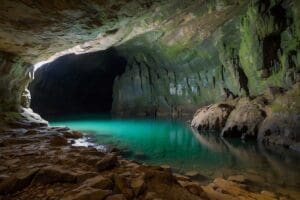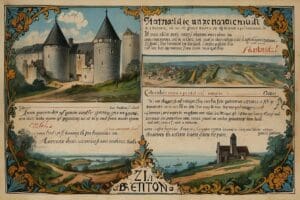Explore the Wonders of China’s Forbidden City
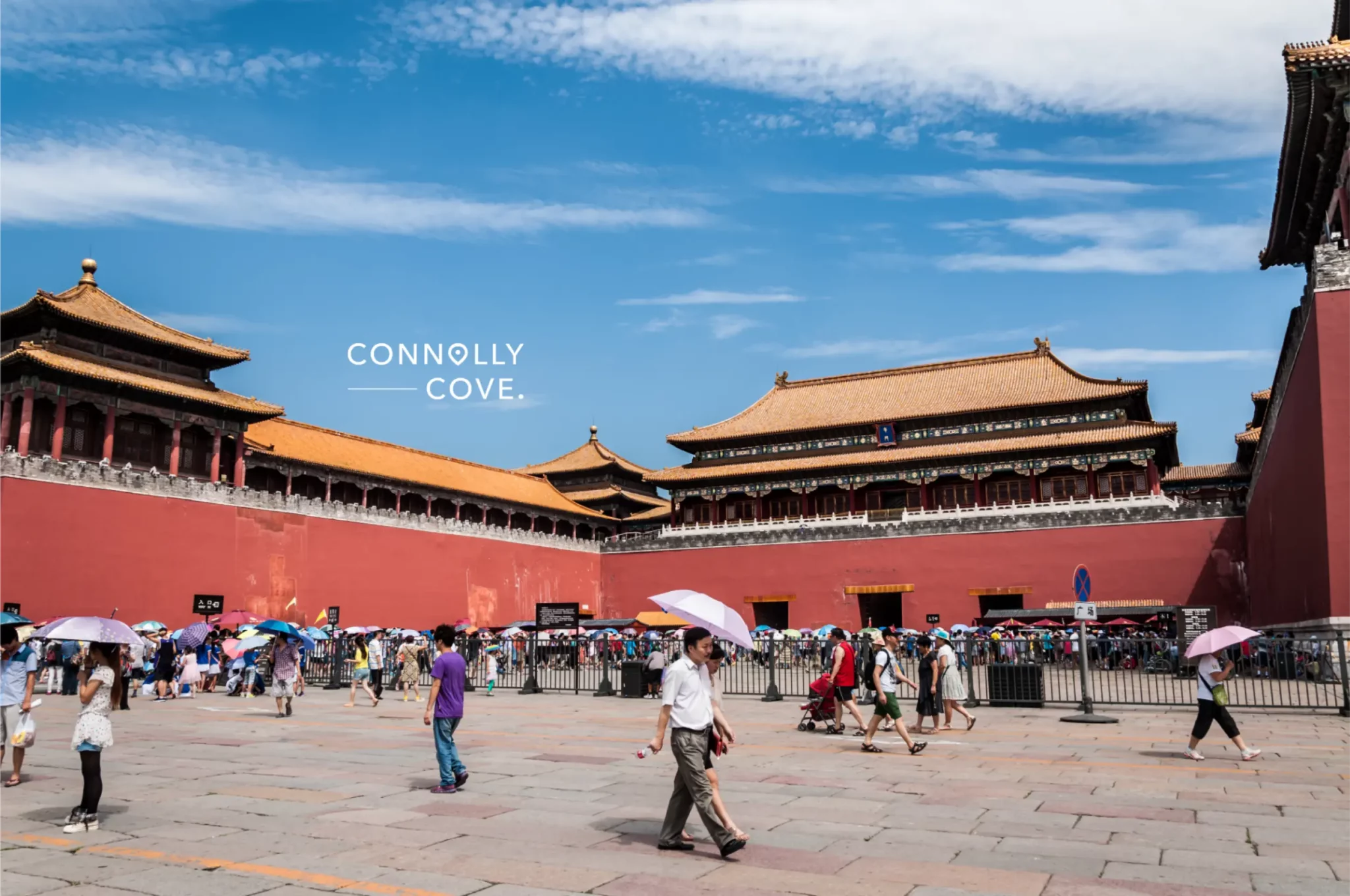
Updated On: April 22, 2024 by Asmaa Alhashimy
Imagine stepping through the hallowed gates into a world frozen in time, where emperors once held court, and the very air whispers tales of dynasties past. The Forbidden City isn’t just a tourist attraction; it’s a living testament to China’s regal legacy and a destination that seamlessly intertwines history, culture, and architectural brilliance.
Nestled at the heart of Beijing, veiled behind towering vermilion walls, lies a realm of imperial splendour and historical mystique—the Forbidden City. This ancient marvel, shrouded in centuries-old secrets and crowned with architectural grandeur, beckons to all those with an insatiable wanderlust for adventure and cultural immersion.
Join us as we unravel the mysteries behind its towering walls, unlock the treasures within, and reveal why this iconic palace remains a crown jewel in Beijing’s tourism panorama.
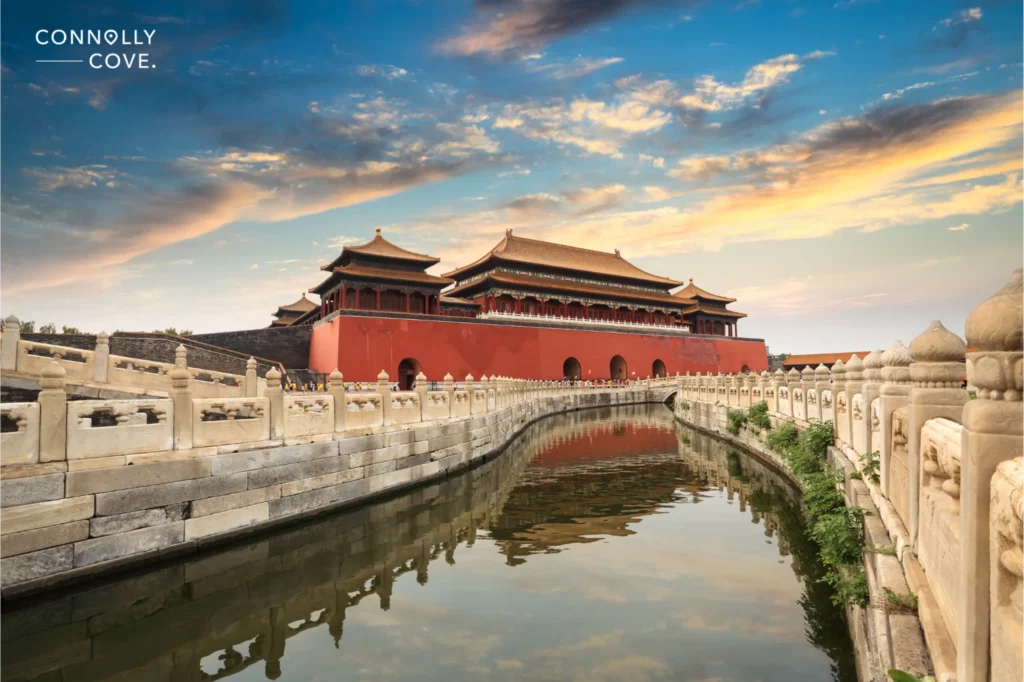
Table of Contents
History of the Forbidden City
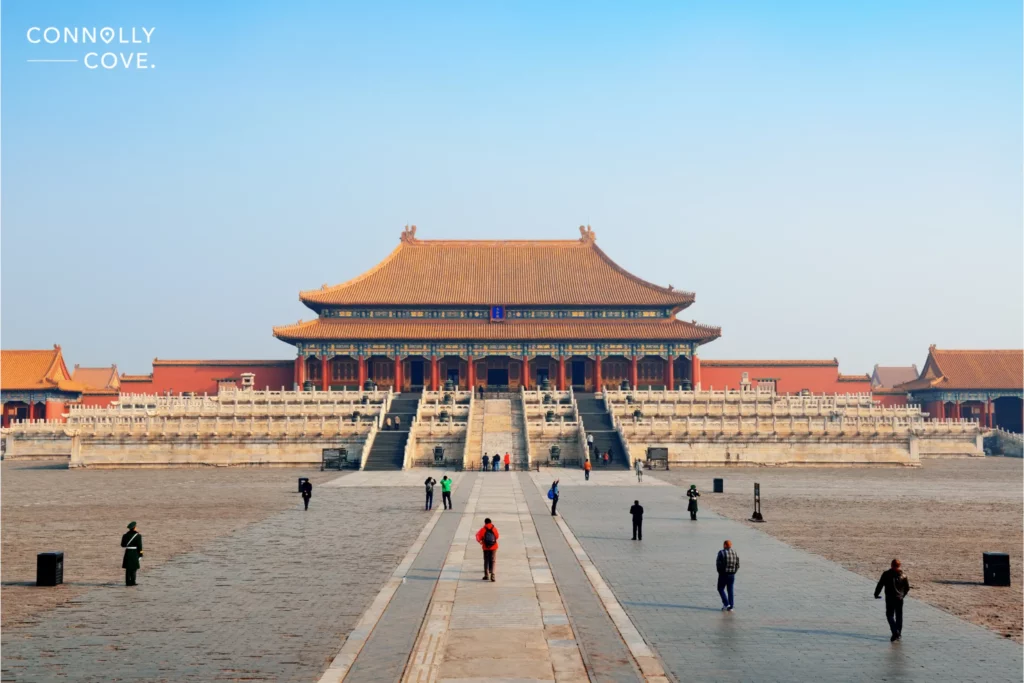
Before we explore this iconic landmark, let’s embark on a journey through centuries of Chinese history and learn the tale of constructing the Forbidden City.
Origins and Construction (1406–1420)
In the early 15th century, during the Ming Dynasty, the third emperor, Yongle, decided to move the capital from Nanjing to Beijing. This monumental decision laid the groundwork for the construction of an imperial palace that would symbolise the might and authority of the emperor. The chosen location was strategically significant, aligning with traditional Chinese cosmology.
Construction of the Forbidden City began in 1406 and took a staggering 14 years to complete, concluding in 1420. An army of labourers, artisans, and craftsmen toiled to erect a palace complex that would become the political and ceremonial centre of the Chinese empire for centuries to come.
Imperial Residences (1420–1912)
The Forbidden City was the primary residence for 24 emperors from the Ming and Qing Dynasties. It was a closed-off enclave, accessible only to the imperial family, high-ranking officials, and selected servants. The term “Forbidden City” reflects the restricted access imposed on the common populace.
Within its hallowed walls, emperors held court, conducted state affairs, and participated in elaborate ceremonies that underscored their legitimacy and authority. The Forbidden City, with its intricate courtyards and majestic halls, witnessed the ebb and flow of Chinese history, from the height of imperial power to the decline of the dynastic system.
Transition to a Museum (1925–Present)
Following the abdication of the last emperor, Puyi, in 1912, the Forbidden City underwent a transformative shift. In 1925, it was converted into the Palace Museum, opening its doors to the public for the first time. Today, visitors from around the world can explore the Forbidden City, immersing themselves in the rich tapestry of China’s imperial past.
The Forbidden City stands not only as a remarkable architectural achievement but also as a living testament to the political, cultural, and social evolution of China over the centuries. Its storied history continues to captivate and inspire, making it a must-visit destination for those seeking to unlock the mysteries of ancient China.
Architecture and Layout of the Forbidden City
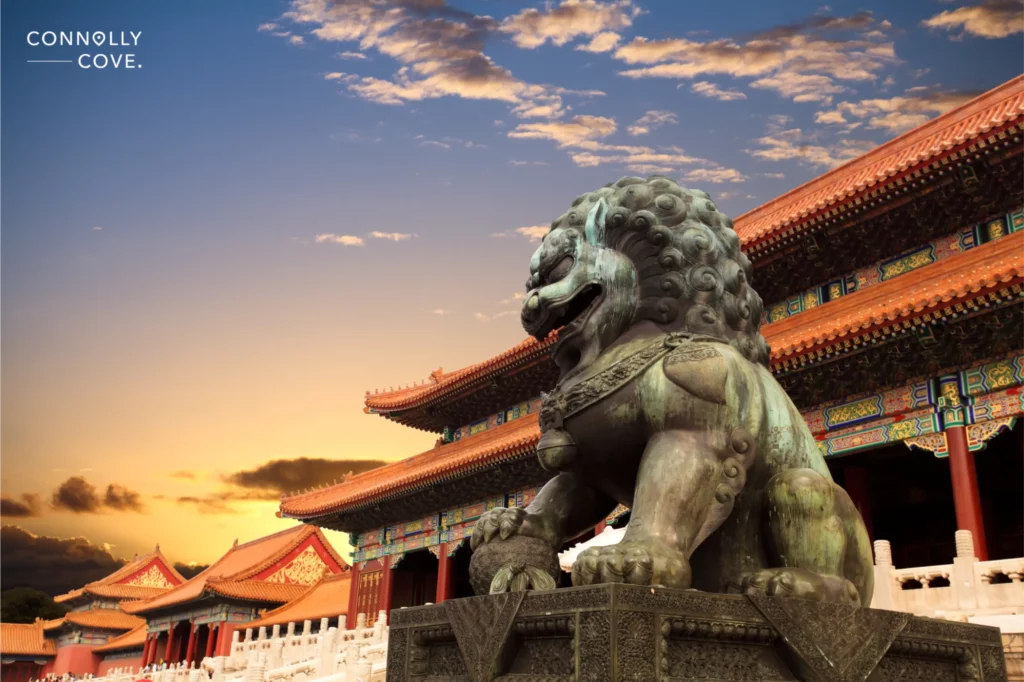
The architecture and layout of the Forbidden City are masterpieces of Chinese planning and architecture. Each building, gate, and courtyard was carefully positioned to emphasise the emperor’s divine right to rule and the hierarchical order of the imperial court.
The palace complex consists of nearly 1,000 buildings, including ceremonial halls, living quarters, and lush gardens. The meticulous design, intricate carvings, and vibrant colours of the structures were not merely aesthetic choices but carried profound symbolic meaning, reinforcing the emperor’s divine mandate to rule.
Axis and Symmetry
The Forbidden City’s architecture reflects the profound influence of Confucianism and Chinese cosmological beliefs. It was designed to be a microcosm of the universe, emphasising the emperor’s supreme authority. The layout follows a north-south axis, with the main halls strategically placed to symbolise the emperor’s connection with the celestial realm.
Vermilion Walls and Golden Roofs
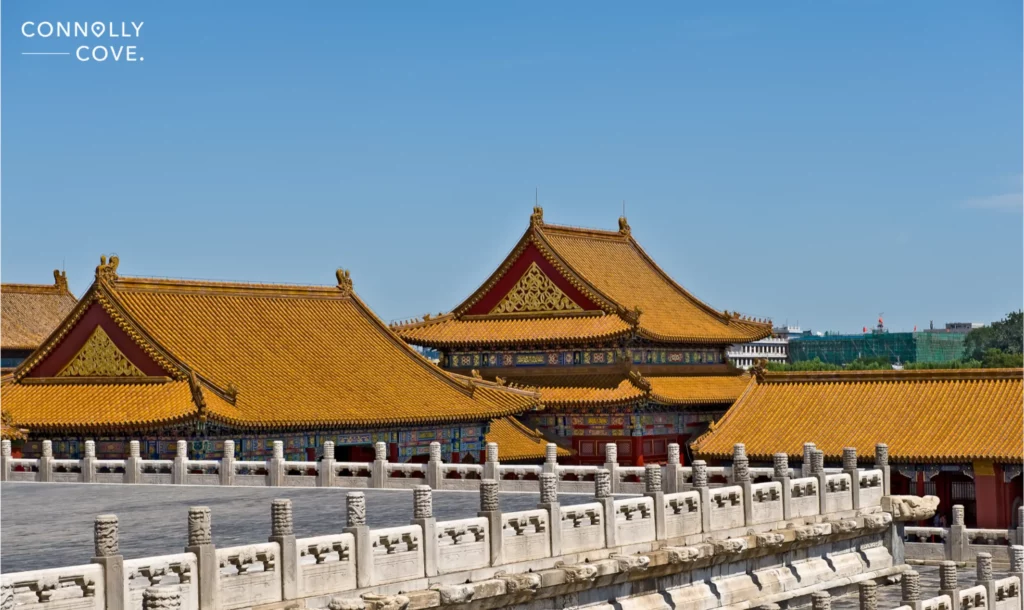
The Forbidden City is encased by ten-metre-high brick and stone vermilion walls, symbolising the emperor’s authority and further emphasising the isolation of the complex. The roofs of the buildings are adorned with golden tiles, a colour combination reserved for imperial structures.
Outer Court
The Outer Court, located in the southern part of the Forbidden City, is the ceremonial and administrative centre. It includes several key structures and open spaces.
- Meridian Gate: The Forbidden City’s main entrance, leading to the vast outer courtyards. It features five archways and is guarded by stone lions. The name “Meridian Gate” symbolises the idea that the emperor ruled from the central point of the world.
- Golden Stream Bridges: Crossing a series of five bridges, visitors approach the Gate of Supreme Harmony, creating a sense of grandeur and formality.
- Hall of Supreme Harmony: The largest and most important hall in the Outer Court, where grand ceremonies, like coronations and imperial examinations, took place.
- Hall of Central Harmony: Served as an awaiting room for the emperor before ceremonies.
- Hall of Preserving Harmony: Served as a rehearsal space for ceremonies and banquets.
Inner Court
The Inner Court, situated in the northern part of the Forbidden City, is the private residential area of the imperial family. It includes structures and spaces that reflect the more personal aspects of imperial life. It provided insight into the daily routines, family life, and the personal chambers of the imperial household.
- Gate of Heavenly Purity: Serving as both the entrance to the Inner Court and the exit from the Outer Court.
- Palace of Heavenly Purity: A three-story structure serving as the emperor’s private residence and office during the Ming Dynasty, where he conducted state affairs and met with officials.
- The Hall of Union: Used for state banquets and receptions.
- Palace of Earthly Tranquility: The empress’s residence, also used for imperial weddings and the birth of princes.
Other Structures
- Moat: The entire complex is surrounded by a moat that serves as a defensive barrier and symbol of exclusivity.
- Imperial Gardens: A serene retreat featuring traditional Chinese landscaping, pavilions, and rockeries. The gardens provided a private space for the imperial family.
- Six Eastern and Western Palaces: Located on either side of the Inner Court, these palaces were used for official functions, housing imperial guards, and as temporary residences for officials.
- Nine Dragon Wall: Located at the southern end is a magnificent wall decorated with nine dragons, symbolising the emperor’s power.
Significance: What Sets the Forbidden City Apart?
The Forbidden City stands as a cultural treasure trove and architectural marvel, holding immense significance in China’s history and global heritage. Several factors contribute to what sets the Forbidden City apart, making it a must-visit destination for tourists and a symbol of China’s rich past.
Seat of Power for 500 Years
For nearly 500 years, the Forbidden City was the imperial palace, housing 24 emperors from the Ming and Qing Dynasties. Its halls witnessed the grandeur of imperial ceremonies, the intricacies of court life, and the ebb and flow of Chinese history.
Architectural Masterpiece
The Forbidden City’s architecture is a masterpiece of traditional Chinese design, characterised by vermilion walls, golden roofs, and intricate wooden carvings. Its meticulous layout follows principles of Feng Shui and cosmology, reflecting the emperor’s supreme authority.
Symbolic Significance
The layout of the Forbidden City is imbued with symbolic meaning, aligning with traditional Chinese cosmological beliefs. Its north-south axis, central halls, and distinct courtyards reflect the emperor’s connection with the celestial realm and the order of the universe.
Repository of Cultural Treasures
The Forbidden City is home to an extensive collection of Chinese art and artefacts, including paintings, ceramics, jade, and furniture. Its museum, the Palace Museum, is a repository of over a million cultural relics, providing insight into China’s artistic and historical heritage.
UNESCO World Heritage Status
Designated as a UNESCO World Heritage Site in 1987, the Forbidden City is recognised globally for its cultural and historical significance. Its inclusion on this prestigious list underscores its importance in preserving humanity’s shared heritage.
Public Access and Education
The transformation of the Forbidden City into the Palace Museum in 1925 marked a shift towards public access. Opening its doors to visitors allowed for cultural exchange and education, enabling people from around the world to appreciate China’s imperial history.
Tourist Attraction
Drawing millions of visitors annually, the Forbidden City is a linchpin in China’s tourism industry. Its allure lies not only in its historical and cultural richness but also in the immersive experience it offers to those exploring its opulent halls, courtyards, and gardens.
Visiting the Forbidden City
Embarking on a journey to the Forbidden City is not merely a tourist outing; it’s an immersive experience. Stepping through the Meridian Gate is like stepping back in time. Once the exclusive domain of emperors and their court, the sprawling complex now welcomes visitors, offering a glimpse into the grandeur and mystique of China’s imperial past.
Here’s a glimpse of what you can expect while visiting the Forbidden City:
Gateway to Imperial Majesty
As you enter through the Meridian Gate, the enormity of the vermilion walls and the iconic Gate of Supreme Harmony immediately captivate you. The sense of anticipation builds, signalling that you are about to step into a realm where emperors once held sway.
The Grand Courtyards
The vast outer courtyards, flanked by intricate halls and pavilions, create a sense of grandeur and scale. The meticulously designed spaces showcase the architectural prowess of ancient China while inviting exploration and contemplation.
The Halls
The grandiosity of the Hall of Supreme Harmony leaves visitors in awe. Ornate golden thrones, intricate dragon carvings, and the sheer magnitude of the space evoke a vivid sense of imperial power.
The Hall of Heavenly Purity, with its delicate design and lavish interiors, offers a glimpse into the emperor’s personal space, creating a more intimate connection with history.
Symbolism and Feng Shui
Engaging with knowledgeable guides or audio tours unravels the symbolism embedded in every structure and courtyard. Understanding the principles of Feng Shui adds another layer to the experience, revealing how the Forbidden City was meticulously aligned with cosmic harmony.
Changing Exhibitions and Events
The Forbidden City hosts different exhibitions and cultural events throughout the year. Timing your visit to coincide with one of these events provides an added dimension to your experience, allowing you to witness traditional performances or explore thematic exhibits.
Culinary Delights
The Forbidden City even extends its influence to culinary experiences. Indulge in traditional Chinese cuisine at on-site restaurants, offering a delightful blend of flavours amidst a historical backdrop.
Souvenirs and Mementos
The exit through the Gate of Heavenly Purity leads to a marketplace where visitors can purchase unique souvenirs. From traditional crafts to replicas of imperial artefacts, these mementoes serve as tangible reminders of the journey through China’s imperial past.
Tips for Visiting the Forbidden City
With a bit of preparation, you can make the most of your time exploring the iconic Forbidden City. Here are some tips to enhance your experience and help you create lasting memories of your visit to this incredible cultural landmark.
- Verify the Forbidden City’s opening hours and plan your visit accordingly. To enjoy a less crowded experience, consider visiting during weekdays and avoiding public holidays.
- Purchase tickets online or at designated ticket booths to avoid long lines at the entrance.
- Consider hiring a guide who can provide historical context and insights. The Forbidden City also offers audio guides in multiple languages for a self-guided tour.
- The Forbidden City is vast, so wear comfortable shoes suitable for walking. As a place of historical and cultural significance, consider dressing modestly out of respect.
- Arriving early allows you to explore key areas before the crowds arrive.
- Begin your journey with the Hall of Supreme Harmony, the ceremonial centre. Explore the halls in sequential order for a structured understanding of history.
- Take a break in the Imperial Gardens for a peaceful retreat.
- Plan to spend several hours exploring the Forbidden City thoroughly.
- Take advantage of photo opportunities, but be mindful of guidelines regarding photography in certain areas.
- Check for any special events or temporary exhibitions happening during your visit.
- Adhere to the Forbidden City’s rules and regulations to ensure a respectful and enjoyable visit.
- Exit through the North Gate for a different perspective and access to a lively marketplace.
- Bring water to stay hydrated, especially during warmer months.
A Lasting Legacy
As you depart from the Forbidden City, carry with you not just photographs and souvenirs but a newfound understanding of China’s past and its place in the world. Let its beauty and grandeur inspire you to explore new horizons, embrace different cultures, and appreciate the richness of human history.
The Forbidden City’s allure lies not just in its opulence but in its ability to transport visitors to a bygone era, allowing them to witness the splendour and complexity of China’s imperial past.
Beyond the Forbidden City, China beckons with many other landmarks offering diverse glimpses into its multifaceted history and breathtaking landscapes. If you’re eager to continue your exploration of China’s cultural and natural wonders, visit the Great Wall of China and enjoy panoramic views and a profound sense of history.




